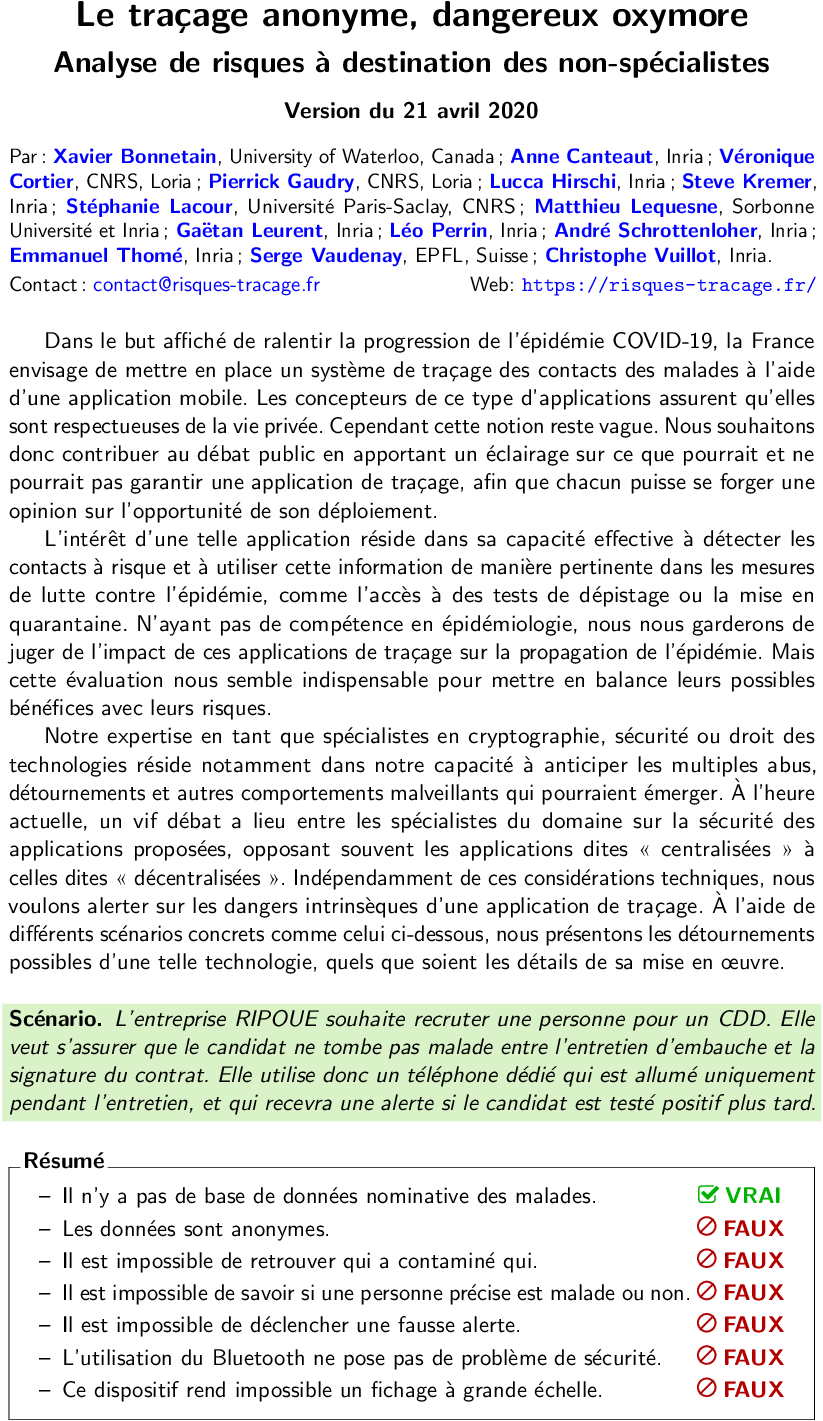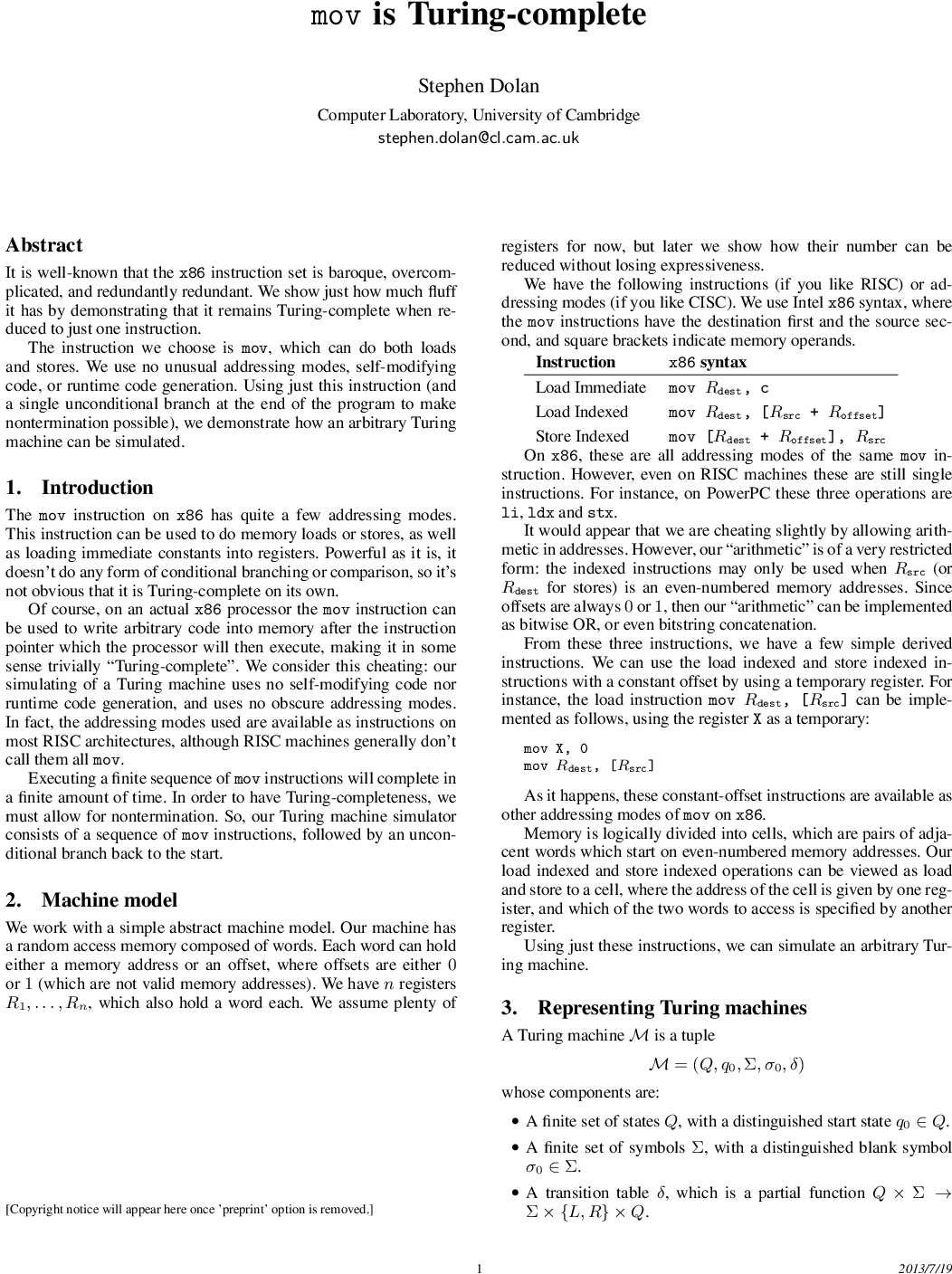

Wellcome to Sergey Kirgizov's library,
You can find here all papers liked or uploaded by Sergey Kirgizovtogether with brief user bio and description of her/his academic activity.
Sergey's personsal site : http://kirgizov.link.
☆
1
Comments:
Apparently, a single 'mov' assembler instruction is already Turing complete.
Implementation of mov-only compilator is [available](https://github.com/xoreaxeaxeax/movfuscator/blob/master/README.md).
> The M/o/Vfuscator (short 'o', sounds like "mobfuscator") compiles programs into "mov" instructions, and only "mov" instructions. Arithmetic, comparisons, jumps, function calls, and everything else a program needs are all performed through mov operations; there is no self-modifying code, no transport-triggered calculation, and no other form of non-mov cheating.



Comments: